History > QUESTIONS & ANSWERS > DeAnza College - HIST 17b Chapter 13. All Answers For grade A 100% (All)
DeAnza College - HIST 17b Chapter 13. All Answers For grade A 100%
Document Content and Description Below
Chapter 13 What did nineteenth-century planters mean when they characterized the master-slave relationship as paternalistic? Which of the following political policies contributed to slave owners' ad... option of paternalist approaches to slaves' welfare? How did planters have time to concentrate on marketing, finance, and general plantation affairs? How did plantations differ from farms in the antebellum South? The ideology of paternalism was based on the conception that slaves were How did young enslaved children spend their days? What happened to slaves when they became too old to work in the field? What was William Harper's argument in this passage from Memoir on Slavery? The limited autonomy slave owners granted to slaves during their nonworking hours in the antebellum South contributed to What was the significance of the Mason-Dixon line in the United States in the 1830s? What did the nineteenth-century plantation mistress spend most of her time doing? In which of the following southern states were African Americans a majority of the population by 1860? Which factor explains the tremendous growth of the southern slave population between 1790 and 1860? What drove the imperative to add increasing numbers of states to the United States in the area below the Mason-Dixon line in the mid-nineteenth century? The southern concept of chivalry in the antebellum period rested upon what assumptions about the nature of women? Who was responsible for the majority of cotton production in the antebellum period? The individualism and independence of southern men meant that social standing and political advancement required Which of the following was a defining feature of life for most southern plantation mistresses in the antebellum period? The institution of black slavery in the antebellum South had what effect on nonslaveholding whites? Most plantation mistresses kept their opinions on issues to themselves, but the diarist Mary Boykin Chesnut echoed many southern women in railing against How did southern planters invest their profits during the antebellum period? Who did large planters typically place in charge of supervising the field labor of slaves? Which of the following was a major disadvantage for slaves who worked in the big house? In the nineteenth century, why were southern whites more intensely and urgently dedicated to white supremacy than northern whites? What core belief was the basis for Southerners' defense of slavery in the nineteenth century? How did planters have time to concentrate on marketing, finance, and general plantation affairs? The ideology of paternalism was based on the conception that slaves were Who provided care for the very young children of slaves on Southern plantations in the antebellum period? What was the "Second Middle Passage" that many slaves endured during the first half of the nineteenth century? What did the South's concept of the master as a dominant patriarch mean for slave women? According to historians, how was a planter distinguished from a farmer in the antebellum South? Following the lead of southern academics, writers, and clergy, in the 1820s and 1830s, white Southerners began to describe slavery as What was the least common slave occupation during the antebellum period? Why did many nineteenth-century slave owners switch from using horses as plantation work animals to using mules? Some nineteenth-century slave owners permitted slave families to engage in "overwork," which was In reality, what did the South's concept of chivalry mean for white women in the antebellum period? What did the common form of protest known by slaves as "lying out" entail? What was responsible for destroying hundreds of thousands of slave families in the nineteenth-century South? Which of the following was true of the form of Christianity adopted by slaves in the nineteenth century? Which of the following was a critical difference between white couples' marriages and slaves' marriages in the antebellum South? How did the cultural ideal of the southern lady compare to that for the middling white woman of the North? Mary Boykin Chesnut would agree with which of the following statements? Why did many slave owners begin to treat their slaves marginally better in the years between 1810 and 1860? Plantation mistresses experienced both benefits and detrimental effects from the institution of slavery, which led most of them to Why did slave owners promote Christianity in the slave quarters of their plantations? Why did American slaves in the antebellum South accommodate the institution of slavery to the extent that they did? Due to its predominantly agricultural economy, the nineteenth-century South Throughout the antebellum years, the slave-based economy of the South What characteristics made the South the "cotton kingdom"? Who would have been required to carry a freedom paper such as the one depicted here? How did slaves express resistance to their situation on a daily basis in the antebellum South? Why were large-scale slave revolts so rare in the antebellum South? How many slaves were there in the South by the year 1860? What does the painting "American Slave Market" reveal about the slave trade? What did antebellum planters do to most slave boys and girls when they reached the age of eleven or twelve? Which crop dominated the economy of the Lower South by 1860? According to Thornton Stringfellow, how does the Bible describe the relationship between master and slave? By 1860, what proportion of Southerners were black? In which of the following southern states were African Americans a majority of the population by 1860? According to the map, which crop commanded the greatest agricultural area in the Upper South? Why did Southerners move west during the first half of the nineteenth century? In the 1820s and 1830s, southern efforts to strengthen slavery led to Edward W. Clay, the artist of the lithograph "The Fruits of Amalgamation," would agree with which of the following statements? What was John C. Calhoun's argument about slavery and race in the South? [Show More]
Last updated: 1 year ago
Preview 1 out of 8 pages
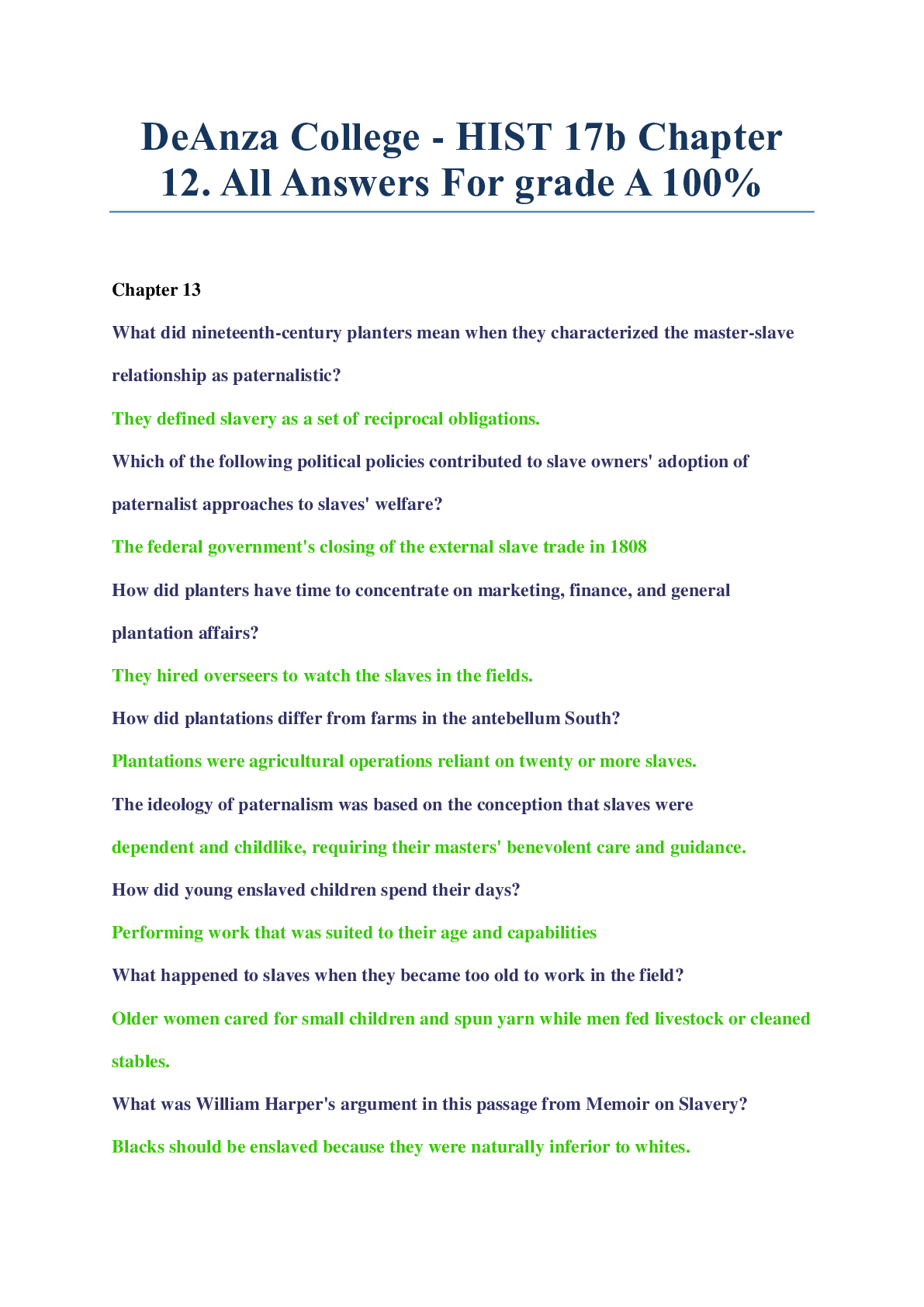
Reviews( 0 )
Document information
Connected school, study & course
About the document
Uploaded On
Feb 10, 2020
Number of pages
8
Written in
Additional information
This document has been written for:
Uploaded
Feb 10, 2020
Downloads
0
Views
47


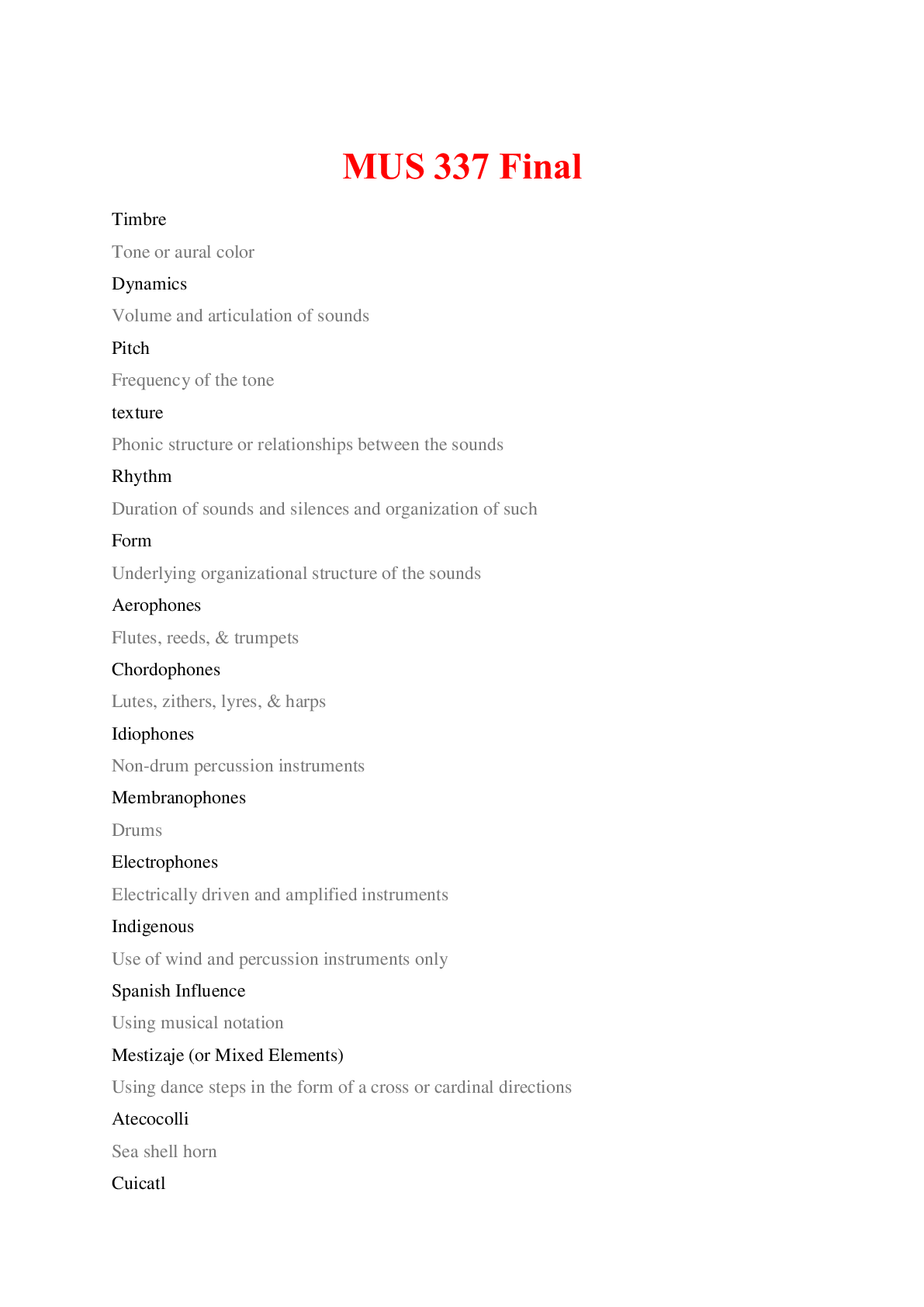







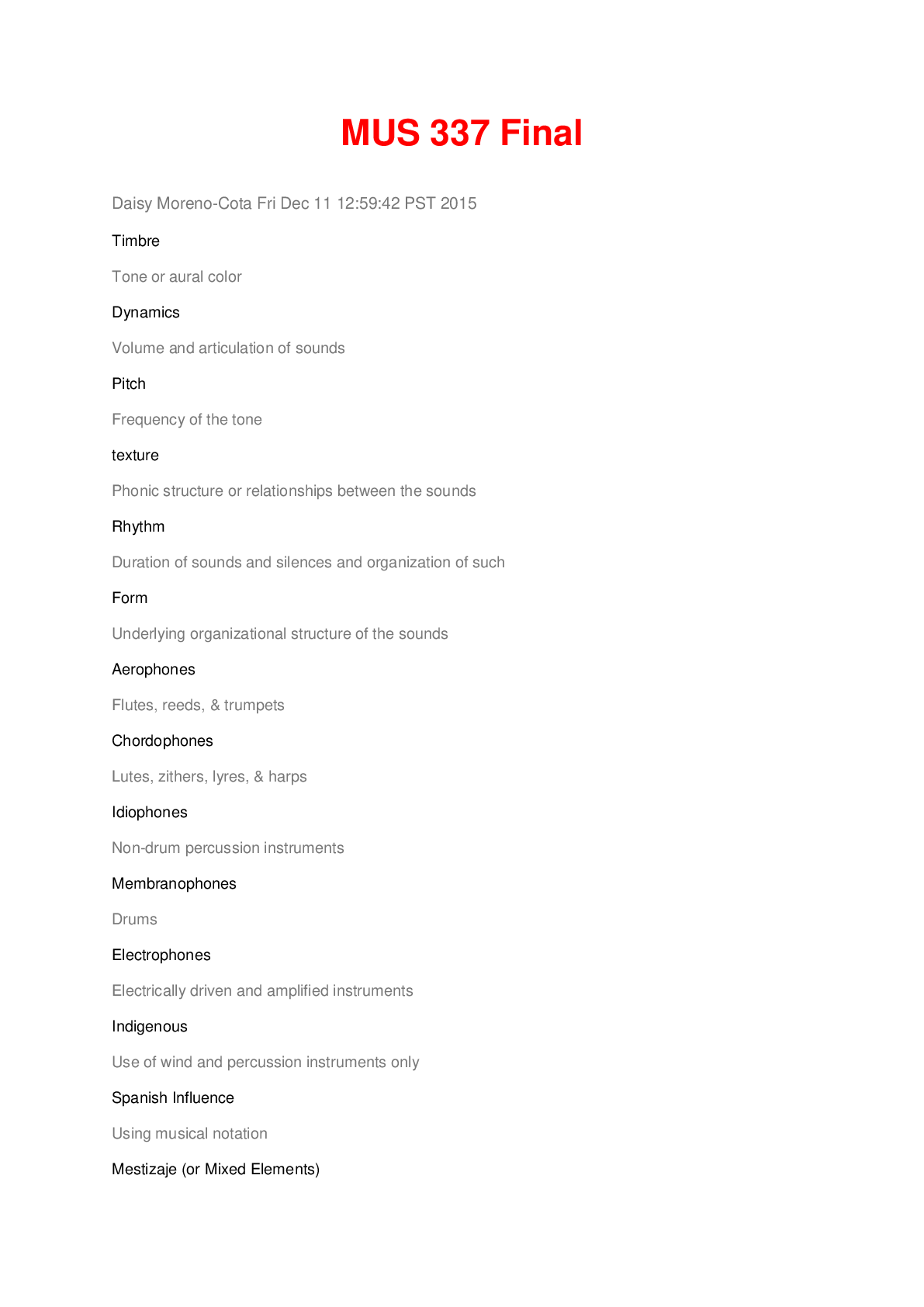




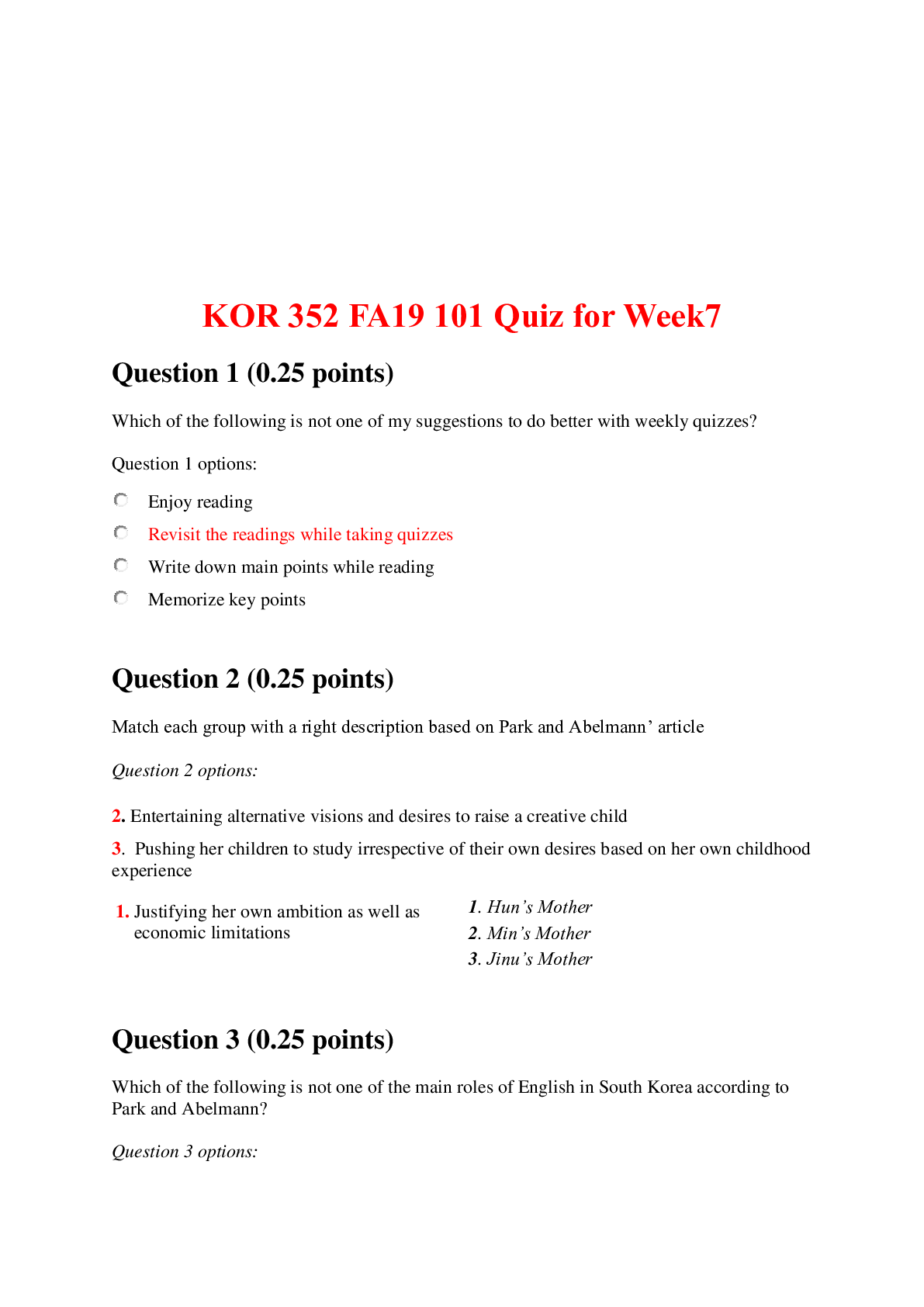


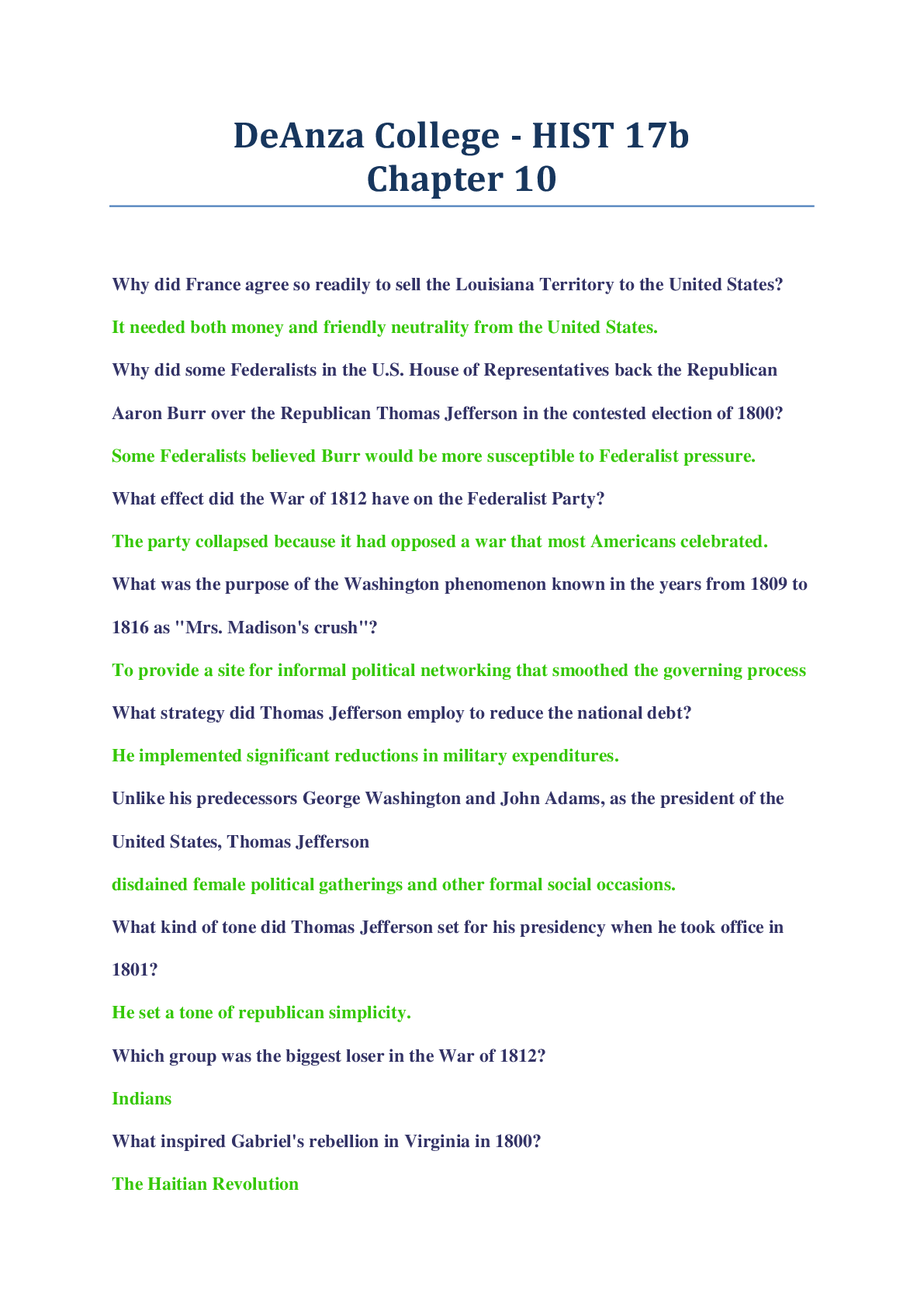
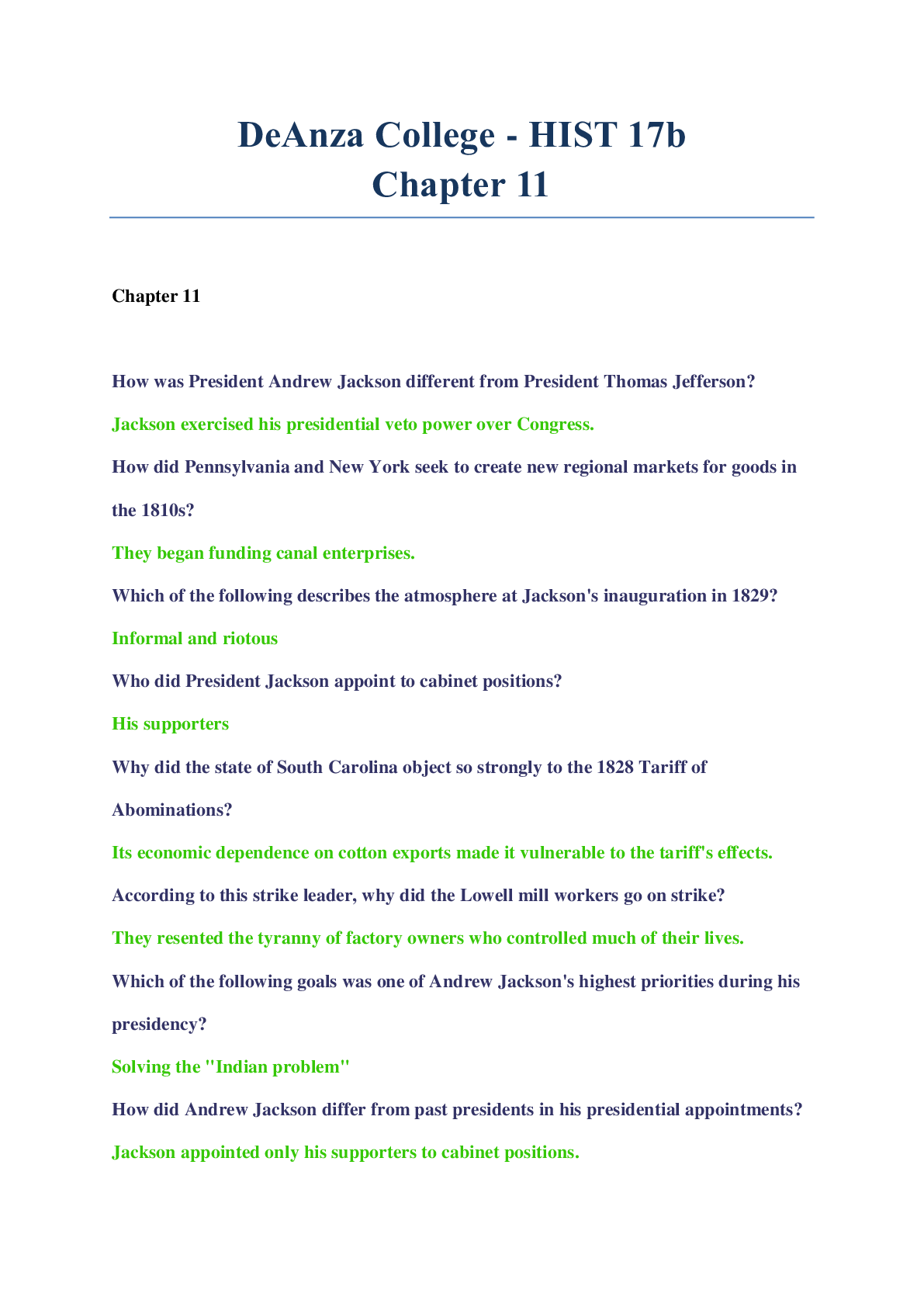
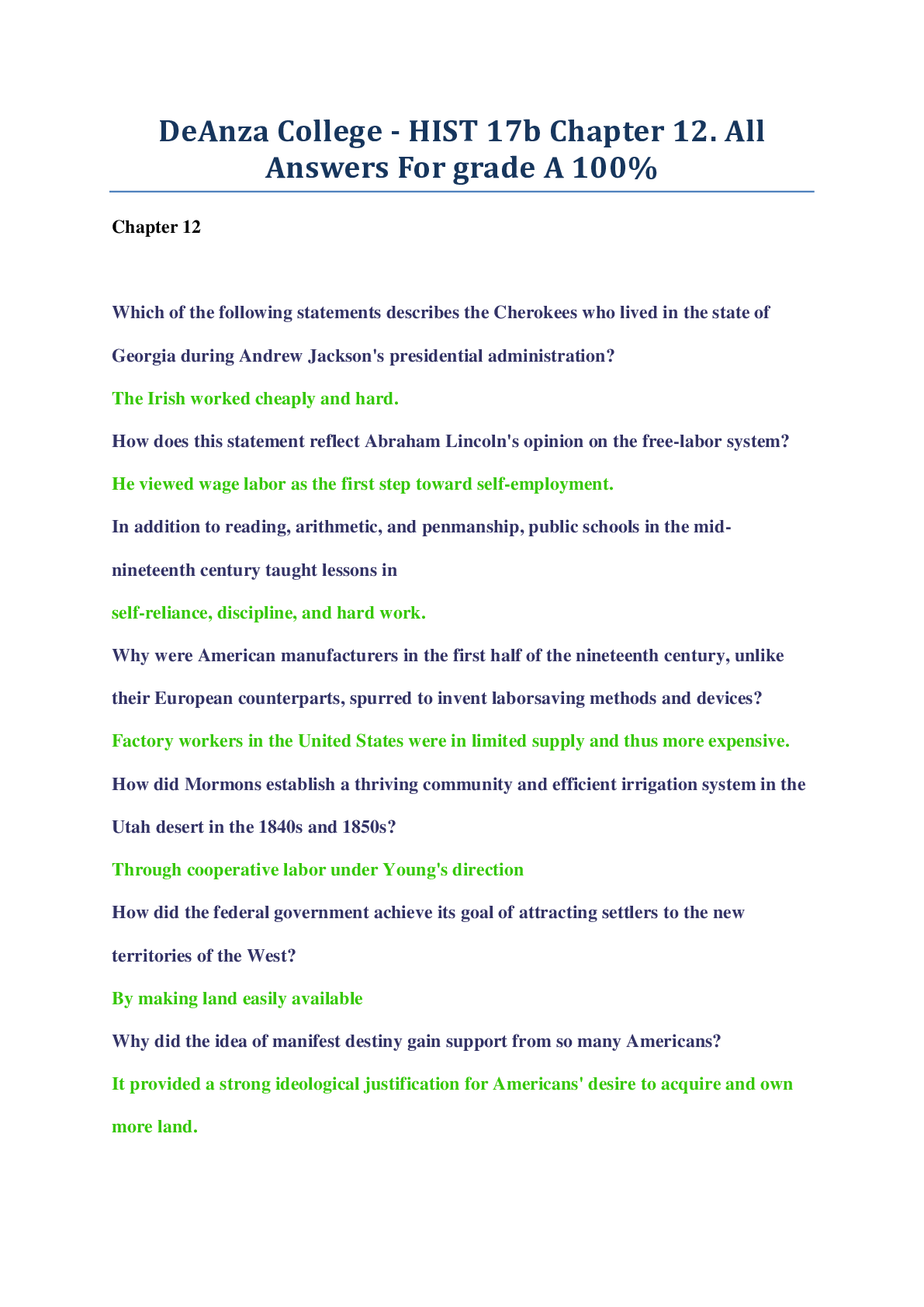
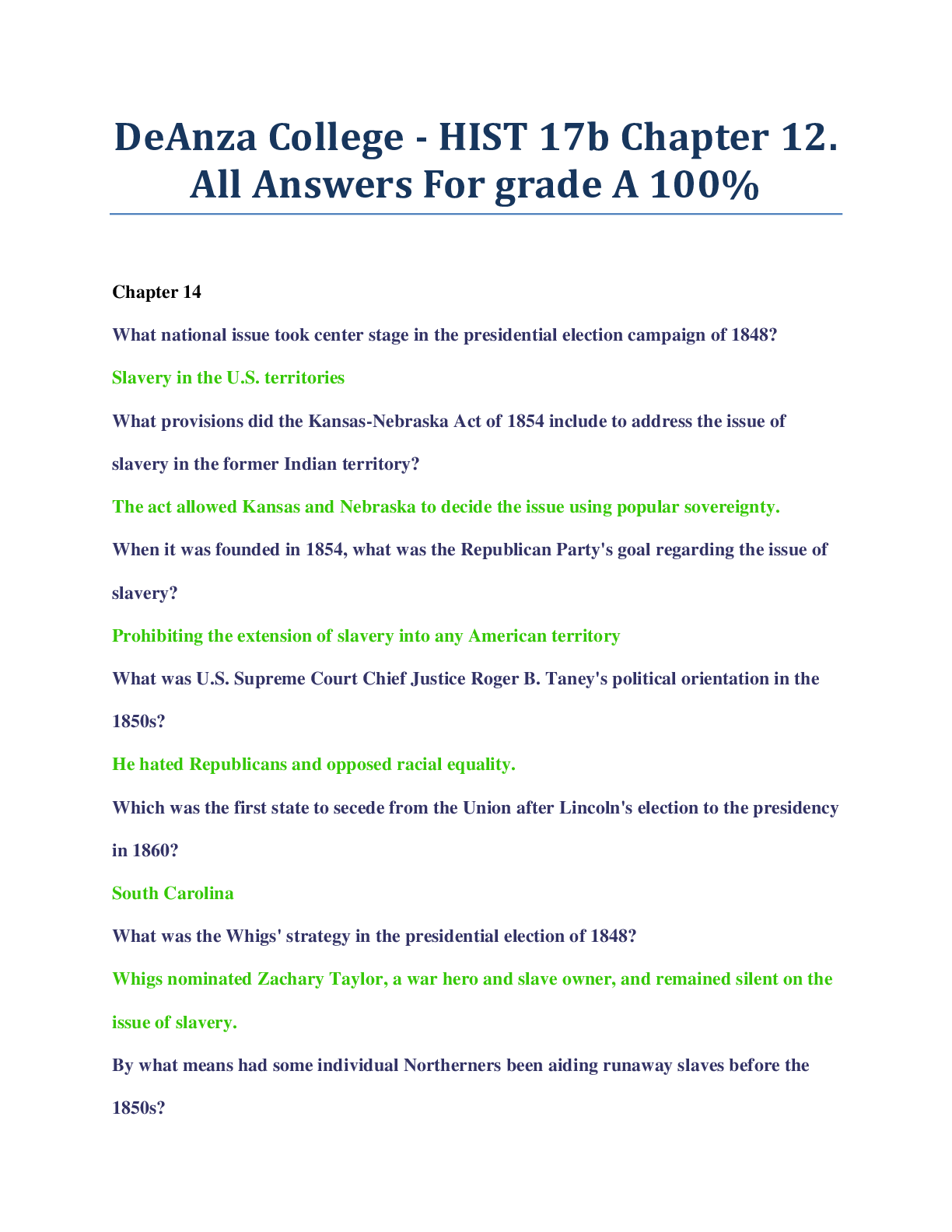
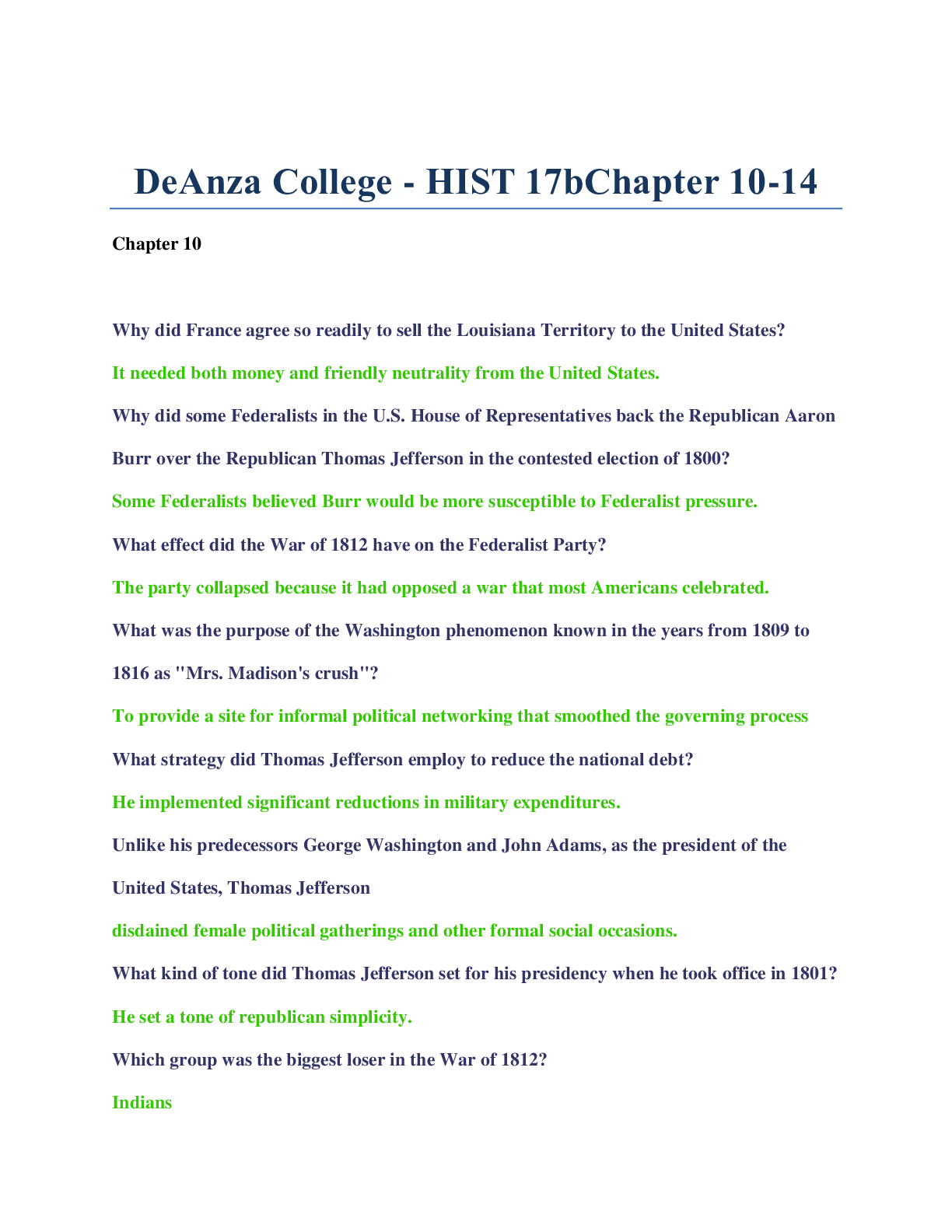

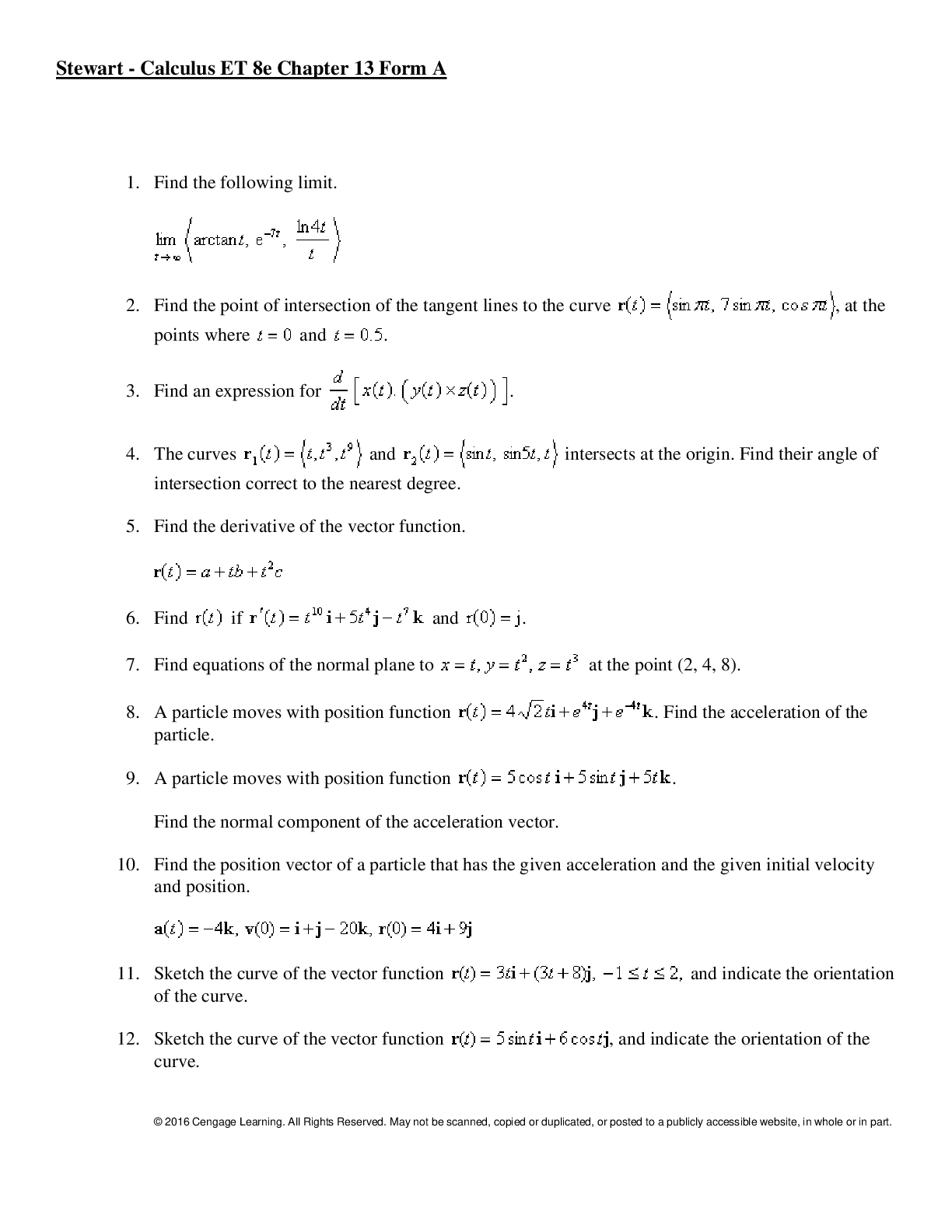
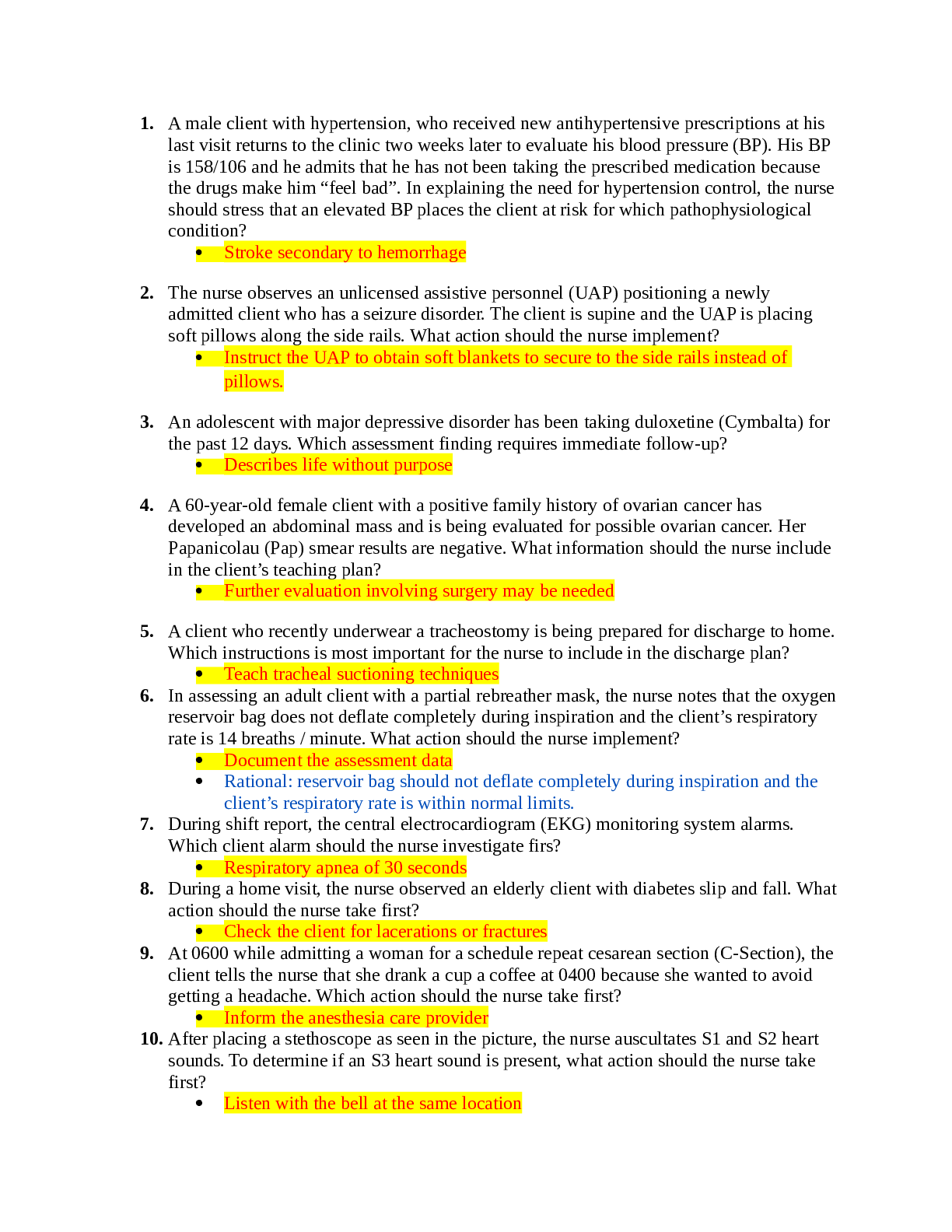

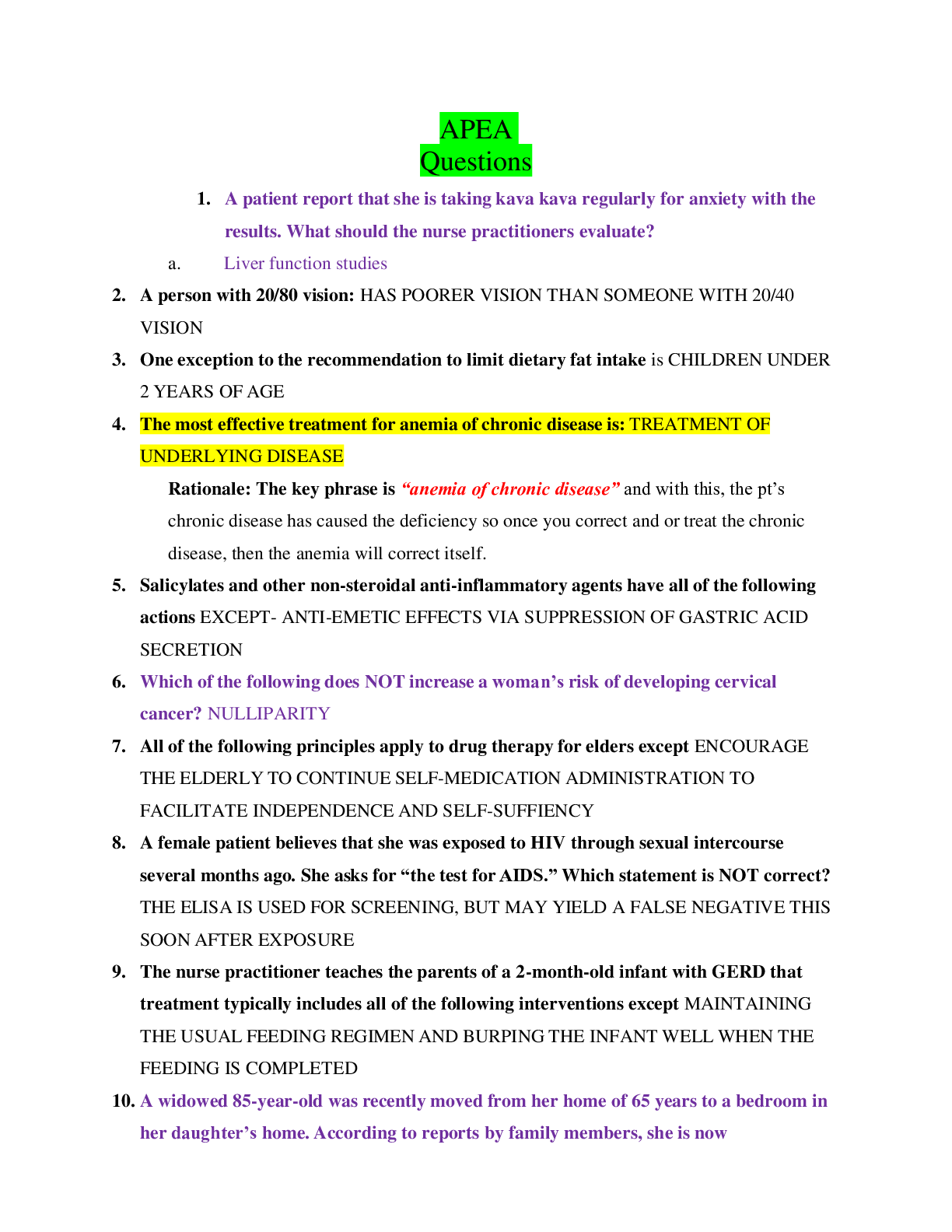



.png)

.png)


